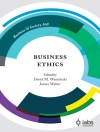The cruise industry is a significant and growing contributor to the U.S. economy, providing more than $32 billion in benefits annually and generating more than 330, 000 U.S. jobs, but also making the environmental impacts of its activities an issue to many. Although cruise ships represent a small fraction of the entire shipping industry worldwide, public attention to their environmental impacts comes in part from the fact that cruise ships are highly visible and in part because of the industry’s desire to promote a positive image.Cruise ships carrying several thousand passengers and crew have been compared to "floating cities, " and the volume of wastes that they produce is comparably large, consisting of sewage; wastewater from sinks, showers, and galleys (graywater); hazardous wastes; solid waste; oily bilge water; ballast water; and air pollution. Thewaste streams generated by cruise ships are governed by a number of international protocols (especially MARPOL) and U.S. domestic laws (including the Clean Water Act and the Act to Prevent Pollution from Ships), regulations, and standards, but there is no single law or rule. Some cruise ship waste streams appear to be well regulated, such as solid wastes (garbage and plastics) and bilge water. But there is overlap of some areas, and there are gaps in others. Some, such as graywater and ballast water, are not regulated (except in the Great Lakes), and concern is increasing about the impacts of these discharges on public health and the environment. In other areas, regulations apply, but critics argue that they are not stringent enough to address the problem – for example, with respect to standards for sewage discharges. Environmental advocates have raised concerns about the adequacy of existing laws for managing these wastes, and they contend that enforcement is weak.In 2000, Congress enacted legislation restricting cruise ship discharges in U.S. navigable waters within the state of Alaska. California, Alaska, and Maine have enacted state-specific laws concerning cruise ship pollution, and a few other states have entered into voluntary agreements with industry to address management of cruise ship discharges. Meanwhile, the cruise industry has voluntarily undertaken initiatives to improve pollution prevention, by adopting waste management guidelines and procedures and researching new technologies. Concerns about cruise ship pollution raise issues for Congress in three broad areas: adequacy of laws and regulations, research needs, and oversight and enforcement of existing requirements. Legislation to regulate cruise ship discharges of sewage, graywater, and bilge water nationally has been introduced in the 110th Congress (S. 2881).This book describes the several types of waste streams that cruise ships may discharge and emit. It identifies the complex body of international and domestic laws that address pollution from cruise ships. It then describes federal and state legislative activity concerning cruise ships in Alaskan waters and activities in a few other states, as well as current industry initiatives to manage cruise ship pollution.
Oliver G Krenshaw
Cruise Ship Pollution [PDF ebook]
Cruise Ship Pollution [PDF ebook]
Cumpărați această carte electronică și primiți încă 1 GRATUIT!
Format PDF ● Pagini 198 ● ISBN 9781617282157 ● Editor Oliver G Krenshaw ● Editura Nova Science Publishers ● Publicat 2018 ● Descărcabil 3 ori ● Valută EUR ● ID 7219676 ● Protecție împotriva copiilor Adobe DRM
Necesită un cititor de ebook capabil de DRM












